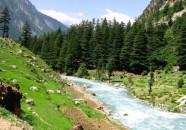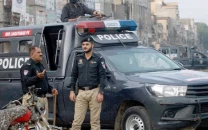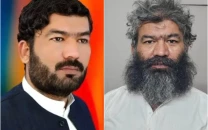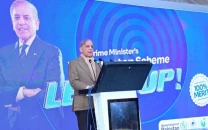Pakistan’s owls in decline as urbanisation, poaching take toll
Deforestation, pollution, unplanned urban expansion have eliminated many natural nesting sites

Pakistan’s owl population is experiencing a sharp drop, wildlife experts warn, as unchecked habitat destruction, shrinking prey, and illegal poaching threaten the survival of these nocturnal birds. Their decline, they say, could have major ecological repercussions.
According to wildlife specialists, deforestation, pollution, and unplanned urban expansion have severely reduced tree cover and eliminated many natural nesting sites. Many owl species rely on tree cavities or the old nests of larger birds to raise their young, habitats that are disappearing fast.
At the same time, the conversion of agricultural lands into housing developments has fractured the owls’ prey base. Small animals like rodents, reptiles, birds, and insects, the main diet of many owl species, are becoming scarcer, putting even greater pressure on their populations.
Illegal poaching remains another major threat. Owls are reportedly being trapped for the illegal pet trade and even for traditional practices. There have also been disturbing reports of these birds falling victim to superstitious beliefs: some are killed or injured so their body parts can be used in black-magic rituals.
Pakistan is home to around 16 owl species, but comprehensive data on their numbers is lacking. In southern Sindh province alone, authorities have recorded at least 10 species, including Indian and collared scops owls, pallid scops owls, rock eagle owls, and barn owls.
Some small owl species, however, appear to be adapting to urban life. Researchers have observed little owls and spotted owlets taking advantage of abandoned rooftops and ledges in densely populated cities. These structures often provide refuge, especially when they are left unused or house water tanks.
Read: Urbanisation is a 'bird-en' that Karachi can not sustain much longer
According to a Karachi-based wildlife researcher, unoccupied rooftops offer surprisingly suitable sanctuaries for these birds, mimicking the tree holes and ledges owls naturally prefer. The researcher noted that as cities grow, these novel spaces may provide partial relief to some urban-tolerant owl species.
Still, the bigger picture remains bleak. Declining owl numbers in many regions suggest that several species are retreating or disappearing altogether. Localized studies hint that Himalayan barred owlets and certain scops owls may already have vanished from areas like Margalla Hills National Park in Islamabad, where they once were routinely observed.
Experts argue that stronger legal protection is needed. Under current wildlife laws, not all owls receive protection, and in some areas, hunting licenses may still be granted, a loophole that enables illegal trade. Conservationists are calling for stricter regulations to preserve the owls’ ecological role as bio-regulators. By controlling populations of rodents and reptiles, owls help maintain healthy forest and agricultural ecosystems.
The Sindh Wildlife Department has responded by announcing plans to conduct fresh bird-population surveys, as part of a broader conservation policy. In recent measures, the provincial government has outlawed the use of owls in black-magic rituals, banned their hunting outright, and introduced stiffer penalties for poaching offenses.
However, the picture remains inconsistent across Pakistan. While Sindh has introduced strong measures, others, including Punjab, still allow limited hunting of certain species under controlled permits. Wildlife experts say this fragmented approach undermines cohesive conservation efforts and leaves many owl species vulnerable.
Without urgent and coordinated conservation actions, the decline of Pakistan’s owls may continue, eroding not just avian diversity, but the ecological balance that hinges on their existence.




















COMMENTS
Comments are moderated and generally will be posted if they are on-topic and not abusive.
For more information, please see our Comments FAQ